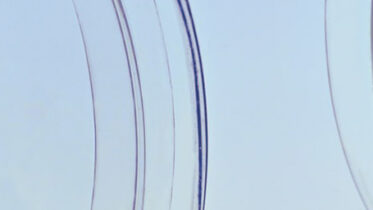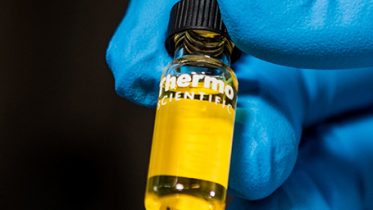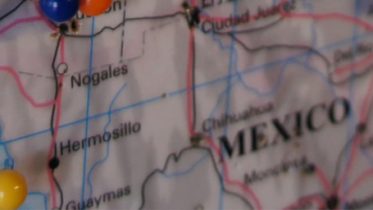Current examination practice in Mexico: Which biotech inventions are allowable by the Mexican Patent Office?
- 12 June 2015
- Articles
It is a well-known fact that the rapid development of science and technology always surpasses the development of a corresponding legal framework to set boundaries and allow a proper use thereof. This holds especially true for the biotechnology sector, which has repeatedly challenged the patent systems around the world with moral and technical concerns, and which moves at such a rate that it is difficult for patent examiners to keep up.
As a measure to cope with this problem, many of the busiest Patent Offices around the world have issued and often update their examination guidelines for biotech inventions. However, despite of ranking 14th in number of total patent applications and 10th in number of patent grants in 2014, the Mexican Patent Office (MPO) has not yet implemented any formal examination guidelines that may allow patent examiners to have an homogeneous criteria when examining biotech applications, and patent applicants to have more certainty when deciding whether to file an application in Mexico or when facing difficulties during prosecution.
Notwithstanding the foregoing, when the Mexican Industrial Property Law (IPL) is not clear enough by itself, it is possible to draw conclusions in light of the usual examiners’ objections during examination as to which subject-matter is permissible within the Mexican jurisdiction. Therefore, the present article intends to provide a general insight to the patent-eligible subject matter in the biotech area in light of the current examination practice of the MPO.
Biological molecules
In Mexico, biological molecules such as proteins (e.g. antibodies), DNA, and RNA are patentable. The only restriction set forth by the IPL is that is that such biological molecules must not be biological or genetic material as found in nature (IPL, Article 16 (II)). Under the current examination practice, the biological molecule, i.e. DNA, does not fall under the exclusion when it is claimed in an isolated or purified state. Recombinant molecules are also not excluded in principle.
In respect to nucleotide and amino acid sequences, in most cases it is advisable to define them in terms of the corresponding sequence number (SEQ ID NO.) or an identity percentage to a defined sequence.
As to antibodies, they should be defined in terms of structural features such as the heavy and light chain sequences or the CDRs, even though it is also possible to characterize antibodies in terms of a deposited hybridome, or binding affinity of the molecule. When the antibody could be regarded as an alternative solution to a technical problem, the application should have evidence –i.e. comparative experimental data- of an unexpected/advantageous effect such as enhanced affinity or reduced immunogenicity.
Microorganisms, animals, and plants
As a signing member of the TRIPS Agreement, Mexico is obliged under Article 27.3 (b) thereof to allow the patentability of microorganisms. In practice, any microorganism is patent-eligible –the IPL does not exclude them from patentability, the only restriction is that the microorganism must be claimed in an isolated form when it is not genetically modified. Therefore, per se claims for microorganisms which have been isolated or comprising an artificially induced mutation are patentable.
The term microorganism seems to encompass bacteria, fungi, yeasts, algae, in vitro plant and animal –including human- cells, hybridomas, virus, plasmids, etc., since patents to such inventions have been granted by the MPO.
Inventions directed to plants and animals are not excluded, unless they refer to a plant variety or animal breed (LPI, Article 16, (III) and (V)). This means that a claim directed to a plant or animal must refer to any taxon different to a plant variety or animal breed.
Particularly, claims referring to genetically modified plants are not rejected under Article 16 (II) or (III), and it should be noted that further to permitting claims to genetically modified plants, the MPO has also previously conferred patent protection to plants which have not been genetically modified, but produced by marker assisted breeding.
On the other hand, methods for producing plants comprising crossing and backcrossing are usually rejected, since they are considered to fall into the exclusion of “essentially biological processes for the production, reproduction and propagation of animal and plants” set forth in Article 16 (I).
As to inventions encompassing animals, the Mexican IPL does not set forth any boundary different to those regarding plants. There is no sui generis protection of animal breeds in Mexico so there is no definition of “animal breeds” to rely on. Additionally, ethical issues may arise, which may lead to a rejection under Article 4 of the IPL for being considered contrary to public policy, morality or proper practice. Against this backdrop, patents on the human body and its living parts are explicitly excluded by Article 16 (IV); so patents on humans, human cloning, or genetic modification of human germ lines are implicitly excluded from patentability.
It is important to note that during the last years, the MPO’s examination criteria in respect of biotech and medical inventions is more akin to EPO’s criteria, which is represented by the European examination guidelines and the most relevant EBoA decisions. In this respect, decisions made in respect of controversial inventions such as plants produced by marker assisted breeding, and methods for producing thereof, or stem cell inventions, may significantly influence a resolution by the MPO.
Therapeutic methods of treatment and medical uses
When a medical application of a biotech invention will be claimed, it is important to consider whether such medical application or use might benefit from patent protection. Specifically, surgical and therapeutic treatment or diagnostic methods applicable to the human body and to animals are not considered inventions (Article 19 (VII)), thus they are not patent-eligible. Methods applicable to the human body or to animals that are not surgical, therapeutic, or diagnostic in nature are therefore not excluded.
Most therapeutic treatment or diagnostic method claims can be redrafted into an admissible format in order to escape the exclusion. For example, Swiss-type claims are commonly accepted by Mexican examiners in the pharma and biotech areas, with a recent trend to prefer purpose-limited product claims. Further, in some recent cases Swiss-type claims have been rejected most likely due to the EPO’s prohibition of said claims. Unfortunately, the criteria is heterogeneous to the extent that it is possible to receive rejections to a specific claim format depending on the criterion of the examiner in charge of examination. Thus, care should be taken when modifying the claim format in order to ensure acceptance by the examiner.
As implied above, medical uses are patentable. Examples such medical uses include new therapeutic uses of known chemical compounds, new dosage regimes, new patient class, new method of administration, and different technical effect. The general recommendation when pursuing this type of inventions is that a clear and unequivocal unexpected advantage must be demonstrated in light of prior art.
Concluding remarks
The MPO allows most of the relevant biotech inventions, albeit one must not forget that the claimed subject-matter must comply with the novelty, inventive step and industrial applicability requirements. It is noted that the IPL does not set additional prohibitions to patent protection than those set forth in the international treaties to which Mexico is party. In view of the lack of examination guidelines, the MPO usually follows criteria and standards set forth by the EPO.
Such rather permissive policy can be attributed to the few exceptions to patentability set forth Mexican IPL and the lack of examination guidelines, which give space to different interpretations of the Law that may be used in favor of the applicants. On the other hand, the disadvantage of not having any local guidance for interpreting the IPL, is that criteria usually change in time and even between examiners at a given time. This provokes situations where contradictory resolutions are made under the same circumstances.
In conclusion, applicants of biotech inventions may find Mexico as an attractive country to apply for patent protection because of its non-restrictive patent law and its practical approach of examination.









